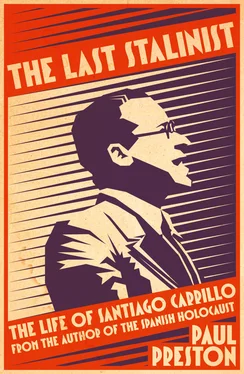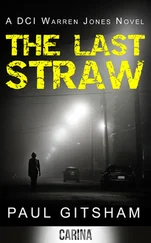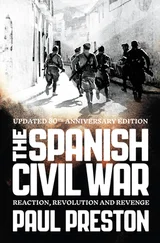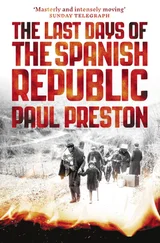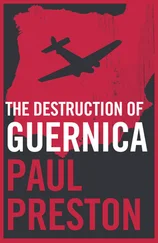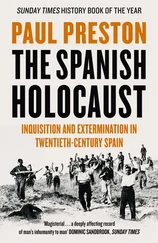The brief interlude after the mass sacas of 7 and 8 November was thanks to Mariano Sánchez Roca, the under-secretary at the Ministry of Justice who arranged for the anarchist Melchor Rodríguez to be named Special Inspector of Prisons. 110The first initiative taken by Melchor Rodríguez on the night of 9 November was decisive. Hearing that a saca of 400 prisoners was planned, he went to the prison at midnight and ordered that all sacas cease and that the militiamen who had been freely moving within the prison remain outside. He forbade the release of any prisoners between 6 p.m. and 8 a.m., to prevent them being shot. He also insisted on accompanying any prisoners being transferred to other prisons. In consequence there were no sacas between 10 and 17 November, when Melchor Rodríguez was forced to resign his post by Juan García Oliver, the anarchist Minister of Justice. His offence was to have demanded that those responsible for the killings be punished. 111After his resignation, the sacas started again. 112
Manuel Azaña, who had succeeded Alcalá Zamora as President of the Republic, and at least two government ministers in Valencia (Manuel Irujo and José Giral) had learned about the sacas . 113Indeed, a speech made on 12 November by Carrillo suggests that, at the time, secrecy was not a major priority. Speaking before the microphones of Unión Radio, he boasted about the measures being taken against the prisoners:
it is guaranteed that there will be no resistance to the Junta de Defensa from within. No such resistance will emerge because absolutely every possible measure has been taken to prevent any conflict or alteration of order in Madrid that could favour the enemy’s plans. The ‘Fifth Column’ is on the way to being crushed. Its last remnants in the depths of Madrid are being hunted down and cornered according to the law, but above all with the energy necessary to ensure that this ‘Fifth Column’ cannot interfere with the plans of the legitimate government and the Junta de Defensa. 114
On 1 December 1936, the Junta de Defensa was renamed the Junta Delegada de Defensa de Madrid by order of Largo Caballero. Having led the government to Valencia, the Prime Minister was deeply resentful of the aureole of heroism that had accumulated around Miaja as he led the capital’s population in resisting Franco’s siege. Thus Largo Caballero wished to restrain what he considered the Junta’s excessive independence. 115Serrano Poncela had already left the Public Order Delegation at some point in early December and his responsibilities were taken over by José Cazorla.
At the end of the war, Serrano Poncela gave an implausible account of why he had left the Public Order Delegation. He told the Basque politician Jesús de Galíndez that he did not know that the words ‘transfer to Chinchilla’ or ‘release’ on the orders that he signed were code that meant the prisoners in question were to be executed. The use of such code could have been the method by which those responsible covered their guilt – as suggested by the phrase ‘with responsibility to be hidden’ in the minutes of the meeting of the evening of 7 November. Serrano Poncela told Galíndez the orders were passed to him by Santiago Carrillo and that all he did was sign them. He told Galíndez that, as soon he realized what was happening, he resigned from his post and not long afterwards left the Communist Party. 116This was not entirely true since he held the important post of JSU propaganda secretary until well into 1938. In an extraordinary letter to the Central Committee, written in March 1939, Serrano Poncela claimed that he had resigned from the Communist Party only after he had reached France the previous month, implying that previously he had feared for his life. He referred to the disgust he felt about his past in the Communist Party. He also claimed that the PCE had prevented his emigration to Mexico because he knew too much. 117Indeed, he even went so far as to assert that he had joined the PCE on 6 November 1936 only because Carrillo had browbeaten him into doing so. 118
Subsequently, and presumably in reprisal for Serrano Poncela’s rejection of the Party, Carrillo denounced him. In a long interview given to Ian Gibson in September 1982, Carrillo claimed that he had had nothing to do with the activities of the Public Order Delegation and blamed everything on Serrano Poncela. He alleged that ‘my only involvement was, after about a fortnight, I got the impression that Serrano Poncela was doing bad things and so I sacked him’. Allegedly, Carrillo had discovered in late November that ‘outrages were being committed and this man was a thief’. He claimed that Serrano Poncela had in his possession jewels stolen from those arrested and that consideration had been given to having him shot. 119Serrano Poncela’s continued pre-eminence in the JSU belies this. Interestingly, neither in his memoirs of 1993 nor in Los viejos camaradas , a book published in 2010, does he repeat these detailed charges other than to say that it was during their time together in the Consejería de Orden Público that their differences began to emerge. 120
The claim that he personally had nothing to do with the killings was repeated by Carrillo in his memoirs. He alleged that the classification and evacuation of prisoners was left entirely to the Public Order Delegation under Serrano Poncela. He went on to assert that the Delegation did not decide on death sentences but merely selected those who would be sent to Tribunales Populares (People’s Courts) and those who would be freed. His account is brief, vague and misleading, making no mention of executions and implying that the worst that happened to those judged to be dangerous was to be sent to work battalions building fortifications. The only unequivocal statement in Carrillo’s account is a declaration that he took part in none of the Public Order Delegation’s meetings. 121However, if Azaña, Irujo and Giral in Valencia knew about the killings and if, in Madrid, Melchor Rodríguez, the Ambassador of Chile, the Chargé d’Affaires of Argentina, the Chargé d’Affaires of the United Kingdom and Félix Schlayer knew about them, it is inconceivable that Carrillo, as the principal authority in the area of public order, could not know. After all, despite his later claims, he received daily reports from Serrano Poncela. 122Melchor Rodríguez’s success in stopping sacas raises questions about Santiago Carrillo’s inability to do the same.
Subsequently, Francoist propaganda built on the atrocity of Paracuellos to depict the Republic as a murderous Communist-dominated regime guilty of red barbarism. Despite the fact that Santiago Carrillo was just one of the key participants in the entire process, the Franco regime, and the Spanish right thereafter, never missed any opportunity to use Paracuellos to denigrate him during the years that he was secretary general of the Communist Party (1960–82) and especially in 1977 as part of the effort to prevent the legalization of the Communist Party. Carrillo himself inadvertently contributed to keeping himself in the spotlight by absurdly denying any knowledge of, let alone responsibility for, the killings. However, a weight of other evidence confirmed by some of his own partial revelations makes it clear that he was fully involved. 123
For instance, in more than one interview in 1977, Carrillo claimed that, by the time he took over the Council for Public Order in the Junta de Defensa, the operation of transferring prisoners from Madrid to Valencia was ‘coming to an end and all I did, with General Miaja, was order the transfer of the last prisoners’. It is certainly true that there had been sacas before 7 November, but the bulk of the killings took place after that date while Carrillo was Consejero de Orden Público. Carrillo’s admission that he ordered the transfers of prisoners after 7 November clearly puts him in the frame. 124Elsewhere, he claimed that, after he had ordered an evacuation, the vehicles were ambushed and the prisoners murdered by uncontrolled elements. He stated, ‘I can take no responsibility other than having been unable to prevent it.’ 125This would have been hardly credible under any circumstances, but especially so after the discovery of documentary proof of the CNT–JSU meeting of the night of 7 November.
Читать дальше
